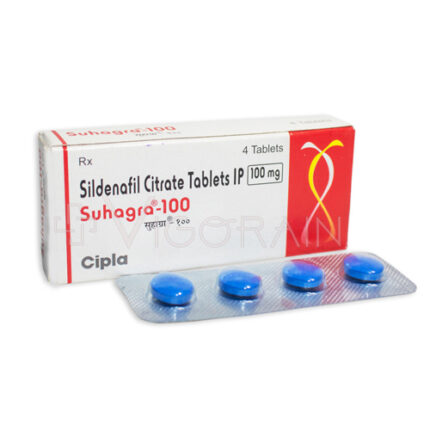

Mifegest kit Mankind Safe Unwanted Kit 2022
$299.00 – $1,899.00Price range: $299.00 through $1,899.00
Available Options
| Pack Size | PRICE/UNIT | Price | Quantity | |
|---|---|---|---|---|
| 1 Kit | $299/Kit | $299.00 | ||
| 2 Kits | $249.5/Kit | $499.00 | ||
| 4 Kits | $224.75/Kit | $899.00 | ||
| 10 Kits | $189.9/Kit | $1,899.00 |
Mifegest kit Set of mifepristone tablets and misoprostol tablets
Mifegest kit Each package contains:
Mifepristone (mifepristone) tablet 200 mg – 1 pc.
Misoprostol (misoprostol) tablets 200 mcg – 4 pcs.
Description of Mifegest kit
Mifegest kit contains one tablet of mifepristone, an orally active antiprogesterone and four tablets of misoprostol (misoprostol), a synthetic analogue of alprostadil (prostaglandin E1). Mifepristone is devoid of estrogenic, antiestrogenic, mineralocorticoid, and antimineralocorticoid properties. Mifepristone is also referred to as RU-486, as is chemically 11β) – (4-dimethylaminophenyl) -17β-hydroxy-17α-(1-propynyl)
Mechanism of action:
When used Mifegest kit as an abortion, mifepristone acts as a progesterone receptor antagonist in the endometrium and trophoblast, which allows prostaglandins to stimulate uterine contractions and causes the fetus to detach from the uterine wall. Various vascular changes are produced that can decrease placental viability as well as decrease glandular secretory activity, accelerate degenerative changes, and increase stromal but not glandular mitotic activity in the endometrium causing endometrial rejection. On the other hand, misoprostol is a synthetic analogue of alprostadil (prostaglandin E1). Prostaglandin E1 interacts with certain receptors on myometrial cells to trigger myometrial contractions. This interaction alters the calcium concentration, which causes a shift in muscle contraction..
Pharmacokinetics:
Following a single dose of Mifegest kit mifepristone 600 mg in healthy female volunteers, the mean maximum plasma concentration was approximately 2.0 mglL at 1.35 hours. After a dose of 20 mg, the absolute bioavailability of mifepristone was 69%. The pharmacokinetics of mifepristone is non-linear and its volume of distribution and clearance are inversely correlated with alpha-1-acid glycoprotein (AAG) concentrations and time- and dose-dependent. Mifepristone is 98% bound to plasma proteins with a high affinity for AAG. Mileprislone crosses the parental barrier, reaching levels equal to one third of maternal plasma in the fetal circulation. The volume of distribution is approximately 1.5 l/kg. Cerebrospinal fluid levels equal to 4% of plasma concentrations have not occurred. Metabolism occurs by sequential demethylation and hydroxylation in the liver and metabolites are excreted in the bile. Elimination is biphasic, with an initial slow phase followed by a faster terminal phase, with an elimination half-life of approximately 18 hours. After ingestion of 600 mg of tritiated mifepristone, 10% of the radioactivity was excreted in the urine and 90% in the fascia. Misoprostol is widely absorbed and undergoes rapid de-esterification from its acid tree, which is responsible for its clinical activity and, unlike the parent compound, is detectable in plasma. In normal volunteers, misoprostol is rapidly absorbed after administration with a misoprostol acid Tmax of 12 + 3 minutes and a terminal halt-life of 20-40 minutes. Mean values after a single dose show a linear relationship with dose in the range of 200-400 mcg. No accumulation of the misoprostol supplement was observed in multiple dose studies; plasma steady state is reached within two days. Peak plasma concentrations of misoprostol acid are reduced when the dose is taken with food and the overall availability of misoprostol acid is reduced by the use of concomitant antacids. After oral administration of radioactively labeled misoprostol, about 80% of the radioactivity found appears in the urine. Serum protein binding of mtsoprostol acid is less than 90% and is concentration independent within the therapeutic range. Peak plasma concentrations of misoprostol acid are reduced when the dose is taken with food and the overall availability of misoprostol acid is reduced by the use of concomitant antacids. After oral administration of radioactively labeled misoprostol, about 80% of the radioactivity found appears in the urine. Serum protein binding of mtsoprostol acid is less than 90% and is concentration independent within the therapeutic range. Peak plasma concentrations of misoprostol acid are reduced when the dose is taken with food and the overall availability of misoprostol acid is reduced by the use of concomitant antacids. After oral administration of radioactively labeled misoprostol, about 80% of the radioactivity found appears in the urine. Serum protein binding of mtsoprostol acid is less than 90% and is concentration independent within the therapeutic range.
Indications:
Mifegest Kit Buy Online, the kit is used for medical termination of intrauterine pregnancy (MTP) up to day 63 of pregnancy, based on the first day of the last menstrual period.
Buy mifepristone and misoprostol kit Contraindications:
Mifegest kit is contraindicated in patients with known hypersensitivity to any of the components of the drug or with a history of allergy to prostaglandins. It should not be given to women whose pregnancy duration is 64 days or more, or women with a confirmed or suspected ectopic pregnancy or an undiagnosed adnexal mass. It should not be given to patients with IUD in situ, chronic adrenal insufficiency, renal or hepatic insufficiency, porphyria, hemorrhagic disorders, or concomitant anticoagulant therapy. It should not be given to patients receiving anticoagulants or long-term corticosteroid therapy.
Precautions and Warnings:
Mifegest kit should be used with caution in patients with asthma or chronic obstructive airway disease, and in patients with cardiovascular disease or associated risk factors. Women over 36 who smoke 10 or more cigarettes per day should be treated with caution, as such patients have generally been excluded from mifepristone clinical trials. Patients with a prosthetic heart valve or those with a history of infective endocarditis should be given chemoprophylaxis while undergoing mifepristone therapy. As with other abortions, Rh-negative women who have not been immunized with Rh will require protection with anti-D immunoghbulin. Women should also be warned about the possible teratogenic effects of the drug, if pregnancy continues after exposure to mifepristone. Use with caution in patients with a history of caesarean section or after uterine surgery and in repeat delivery due to the risk of uterine rupture.
Drug interaction:
Although specific interactions of mifepristone with Mifegest kit drugs or food have not been studied, based on the metabolism of this drug by CYP 3A4, it is possible that ketoconazole, itraconazoie, erythromycin and grapefruit juice may inhibit its metabolism (increase in serum mifepristone). Moreover, rifampicin, dexamethasone, St. John’s wort and some anticonvulsants (phenytoin, phenobarbital, carbamazepine) can induce mifepristone metabolism (decrease in serum mifepristone). Based on in vitro inhibition information, co-administration of mifepristone may result in increased levels of serum drugs that are CYP 3A4 substrates. Due to the slow elimination of mifepristone from the body, such an interaction can be observed for a long period of time after its administration. In this way, Caution should be exercised when using mifepristone and other drugs that are CYP3A4 substrates and have a narrow therapeutic window, including some drugs used during general anesthesia. Aspirin and other non-steroidal anti-inflammatory drugs should be avoided until complete abortion has been performed due to the theoretical risk that these prostaglandin synthetase inhibitors may alter the efficacy of mifepristone and its combikit component.
Adverse reactions:
Mefepristone Mifegest kit is generally well tolerated, with uterine bleeding usually lasting about 12 days after the end of an early pregnancy. Such bleeding is often comparable to normal menstruation and rarely requires hemostatic curettage or blood transfusion to prevent changes exactly to require. Common adverse reactions with mifepristone include: nausea, vomiting, gastrointestinal cramps; uterine contractions, vaginal bleeding; Less commonly, hypersensitivity reactions, including rash, urticaria, and swelling of the face; rarely malaise, headache, fever, flushing, dizziness and chills. The most common side effect with misoprostol is diarrhea, which is usually self-limiting. Other gastrointestinal side effects include abdominal pain, dyspepsia, flatulence, nausea, and vomiting.
Other side effects include skin rash, headache, dizziness, and constipation. Hypotension is rarely seen at recommended doses.
Treatment with Mifegest kit requires three clinic visits per patient. Mifeprlstone can only be administered in a clinic or hospital, or under the supervision of a gynecologist able to assess the gestational age of the embryo and diagnose ectopic pregnancies. The gynecologist must also be able to provide surgical intervention in cases of incomplete abortion or major bleeding, after taking mifepristone when bleeding will start or have made plans to provide such assistance through others, and be able to ensure that patients have access to medical facilities equipped to provide blood transfusion and resuscitation if necessary.
Day one:
One 200 mg mifepristone Mifegest kit tablet is taken as a single dose.
38-48 hours later:
The patient returns to the treating physician after 36-48 hours of mifepristone ingestion. If abortion does not occur and is confirmed by clinical examination or ultrasound scan, four misoprostol 200 mcg tablets are administered intravaginally and the patient remains under the care of the attending physician for at least 6 hours (or until bleeding or pain is at an acceptable level) . For women at 49-63 days of gestation, if abortion does not occur after 4 hours to change misoprostol administration, a second dose of misoprostol 400 mcg (2 x 200 mcg tablets) may be administered vaginally or orally (depending on preference and amount of bleeding). or after administration of misoprostol, the patient may need medication for seizures or gastrointestinal symptoms. Instructions on what to do should be given to the patient,,
Day 14: Post medical examination. The patient should return for a follow-up visit to the doctor approximately 14 days after the use of Mifegest kit mifepristone. This visit is very important to confirm by clinical examination or ultrasound scan that a complete cessation of pregnancy has occurred. Patients who have an ongoing pregnancy at this visit have a risk of fetal malformation as a result of treatment. Surgery is recommended to correct failure after using medical abortion.
Overdose:
No serious adverse reactions were reported in tolerance studies in healthy non-pregnant women and healthy men, where mifepristone was administered in single doses in excess of the recommended rate for termination of pregnancy. These patients ingest massive overdose, it should be observed closely for signs of adrenal insufficiency. Mifegest kit Dose toxicity of misoprostol in humans has not been determined. Cumulative total daily Mifegest kit doses of 1600 mcg were tolerated, with only symptoms of gastrointestinal discomfort reported. Clinical signs that may indicate overdose are sedation, tremor, convulsions, dyspnea, abdominal pain, diarrhea, fever, palpitations, hypotension, or bradycardia. It is not known whether dialysis would be an appropriate treatment for overdose.
Kit containing one Mifegest kit tablet of mifepristone 200 mg and four tablets of misoprostol 200 micrograms.
Store below 25°C
Protect from light
| Brand |
Centurion Laboratories ,Mankind Pharma |
|---|---|
| Active substance |
Mifepristone (200mg) + Misoprostol (200mcg) |
| Best before date |
Until 2024 |
| Time of action |
5-6 hours |
| Alcohol compatibility |
Not |










Felicitas –
I was suggested this web site through my cousin. I’m now
not positive whether or not this post is written by way of
him as nobody else recognise such distinctive
about my problem. You are amazing! Thank you!
My blog … sbobet